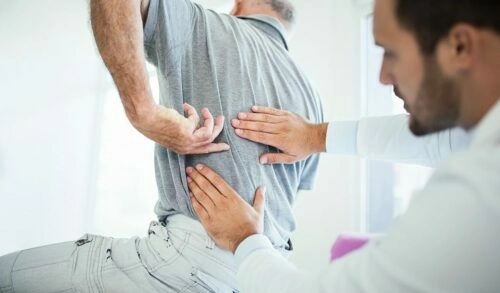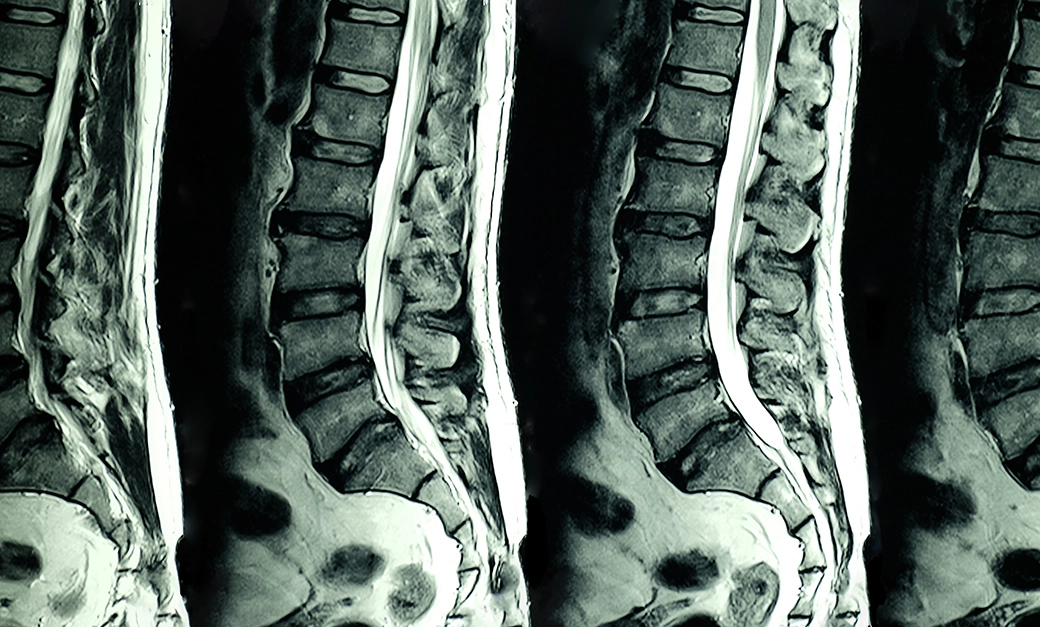Have you been diagnosed with degenerative disc disease? Are you wondering how to cure your DDD? Don’t despair. Here are some tips to help:
DDD is a progressive illness affecting the discs of your spine. Common non-invasive means to help cure degenerative disc disease include:
- Chiropractic care
- Massage therapy
- And Physical therapy
These therapies, when used together or even individually, can provide a powerful means of inhibiting and, sometimes, reversing damage caused by DDD.
1. How Chiropractic Care Can Help Cure Degenerative Disc Disease?
Let’s start with a few studies on DDD and chiropractic care.
A 2012 study in the Journal of Chiropractic Medicine published on Science Direct examined the treatment of “a geriatric veteran with degenerative disk disease and diffuse idiopathic skeletal hyperostosis.” It found that chiropractic treatment consisting of “Activator-assisted spinal manipulative therapy had positive subjective and objective results for LBP (lower back pain) and ambulation (walking).” (1)
And here’s another:
A 2021 study published by the National Library of Medicine examined a 59-year-old male taxi driver who was suffering from Parkinson’s Disease (a progressive neurological disorder). While being treated for Parkinson’s Disease, the taxi driver developed degenerative disc disease involving multiple discs in the lumbar spine. After undergoing 35 chiropractic sessions, the individual experienced significant improvement in gait stability, postural alignment, and postural stability. (2)
Chiropractic care can help cure degenerative disc disease. Let’s explore why.
In a nutshell, degenerative disc disease involves the degradation of the spine, its vertebrae, and the discs that make it up. Anything that contributes to the health of those parts of the body or inhibits their continued decay will help cure degenerative disc disease (DDD). As a rule, chiropractic care is excellent for the health of the spine and its constituent parts.
For example, chiropractic spinal manipulation can help improve an individual’s posture. This realigns the spine, which, in turn, serves to enhance its health. As posture improves, the spine approaches a more natural state in which the body’s natural mechanisms are not impeded by complications that might arise from poor posture. This allows the spine to maintain its overall health better. This will help cure degenerative disc disease, bulging discs, and/or herniated discs by promoting a natural environment conducive to healing.
If you have been diagnosed with DDD, do not hesitate to seek treatment. You would be surprised by how fast DDD progresses.. Part of the problem is that the disease may not have noticeable symptoms in its earliest phases. However, as the disease progresses, it gets progressively worse and nearly unbearable by the time it reaches its fourth and final stage. Of course, by that time, your options are seriously curtailed.
2. How Massage Can Help Cure Degenerative Disc Disease?
It may seem simplistic, but massage is another way to help cure degenerative disc disease. More specifically, chiropractic massage. This is a type of massage done under the supervision of a qualified and skilled chiropractor. The chiropractor will direct the massage therapist as he/she works. In that way, problem areas can be addressed and dealt with through the chiropractor’s expertise. If an area should be avoided, the chiropractor can communicate it to the therapist. The chiropractor can direct the therapist if another area needs extra attention.
As for why massage works on DDD, it is a question of blood flow. Usually, when blood flows naturally through the body, it can bring warmth and healing nutrients to parts of the body that need it, provided there are no obstructions to the flow. Often, in ailments affecting the spine, like DDD, many tissues surrounding the spine become inflamed, thus obstructing blood flow. Massage can reduce that inflammation, freeing up the blood flow and bringing healing nutrients to the areas that need it. Thus, chiropractic massage can help cure degenerative disc disease.
3. How Physical Therapy Can Help Cure Degenerative Disc Disease?
Physical therapy is like a sister therapy to chiropractic care when it comes to curing degenerative disc disease. Physical Therapy often consists of specific exercises to strengthen certain muscles for medical purposes. In cases of DDD, the usual muscles that need strengthening are those around your back, neck, and core.
By strengthening these muscles, you will become more able to support your spine. If used in conjunction with chiropractic treatments that improve your spinal alignment, this will help you ‘lock in’ those gains. Stronger muscles surrounding the spine are more likely to keep it from deviating from its correct posture. This will reduce pain, help increase your range of motion, and help provide an overall better quality of life – not to mention help cure degenerative disc disease.
How Long Does It Take For Degenerative Disc Disease To Heal?
There is no fixed answer to this question. First, the amount of time and even the possibility of successful treatment depend upon the phase of DDD development you are in when you start treatment. There are four phases, each progressively worse than the one that preceded it. Individuals in phase one often have no symptoms and may be unaware that they have DDD. Individuals in phase four, on the other hand, must usually resort to surgery for treatment.
However, if your DDD is noticeable and still treatable through non-invasive natural ways, you should see significant improvement in the symptoms within three or four months or so. Although, again, this will vary from individual to individual and can be influenced significantly by other conditions affecting the patient.
DDD, if left untreated, can lead to several other spinal issues like bulging discs, herniated discs, and other such problems. If your DDD has led to a bulging disc, for example, the bulging disc’s recovery is, more or less, a prerequisite for the DDD’s recovery.

The Signs You Need Treatment for Your DDD
As stated above, often, when DDD begins, you may not suffer any symptoms. But don’t let that fact fool you. You don’t want to put off treatment for DDD for any reason. In fact, on our list of things to avoid with DDD, putting off seeing a chiropractor ranks as number one. Failure to treat the problem can lead to complications that could have been avoided. So, the first and most obvious sign you need treatment for DDD is that you’ve been diagnosed with DDD.
Beyond that, the signs and symptoms often associated with DDD include:
- Changes in the curvature of the spine (Stage 1)
- Herniated and/or bulging discs (Stage 1)
- Pain levels ranging from mild discomfort to occasional pain (Stage 2)
- Lack of energy (Stage 2)
- Constant pain (Stage 3)
- Reduced mobility (Stage 3)
- Compression of nerves (Stage 3)
- Growth of bone spurs (Stage 3)
- More pronounced lack of energy (Stage 3)
- Near-constant pain (Stage 4)
- Spinal vertebrae may begin to fuse (Stage 4)
- Severe reduction in mobility (Stage 4)
Generally speaking, without medical training, you probably won’t be able to identify the cause of symptoms you may be suffering from, whether the symptoms mentioned above or not. So, it’s a good rule of thumb to seek medical help when noticing something amiss.
What is the Difference Between DDD and a Bulging Disc?
Degenerative disc disease is a condition in the body that can affect the entire spine. Basically, with DDD, one or more discs in your back are weakened. This can result from the usual wear and tear of age or injury.
A bulging disc, however, refers to a single disc beginning to “bulge” out of place. Typically, it is under unusual pressure from its surrounding vertebrae, which squeeze it too much on one side and force much of its matter to the other.
Sometimes, a “bulging disc” can worsen and become a herniated disc. In such situations, the disc tears, and the gel-like fluid inside leaks out. Fortunately, treating herniated and bulging discs is a common therapy available in a chiropractic office.
How To Cure Cervical Disc Disease?
If you have cervical disc disease, your approach should be similar to other forms of degenerative disc disease. Start with non-invasive conservative therapies and proceed from there. For example, if you notice mild pain and soreness in your neck, you might start with a combination of heat and ice therapy and a few simple stretches. After that, you might try simple over-the-counter medications. If those fail, consulting a doctor or other medical professional like a chiropractor is a good idea.
How To Cure Lumbar Disc Disease?
Treating lumbar disc disease is not so different from treating cervical disc disease,, as mentioned above. Start with heat, ice, and simple stretches. Progress to over-the-counter meds. Then, seek out medical help.
Conclusion
Although in the long run, an individual’s case of degenerative disc disease may not always be fully curable, it often can be treated and managed so that that person can have a good quality of life. Don’t be a victim of your disease. Visiting a chiropractor’s office is a good first step to fighting back.









